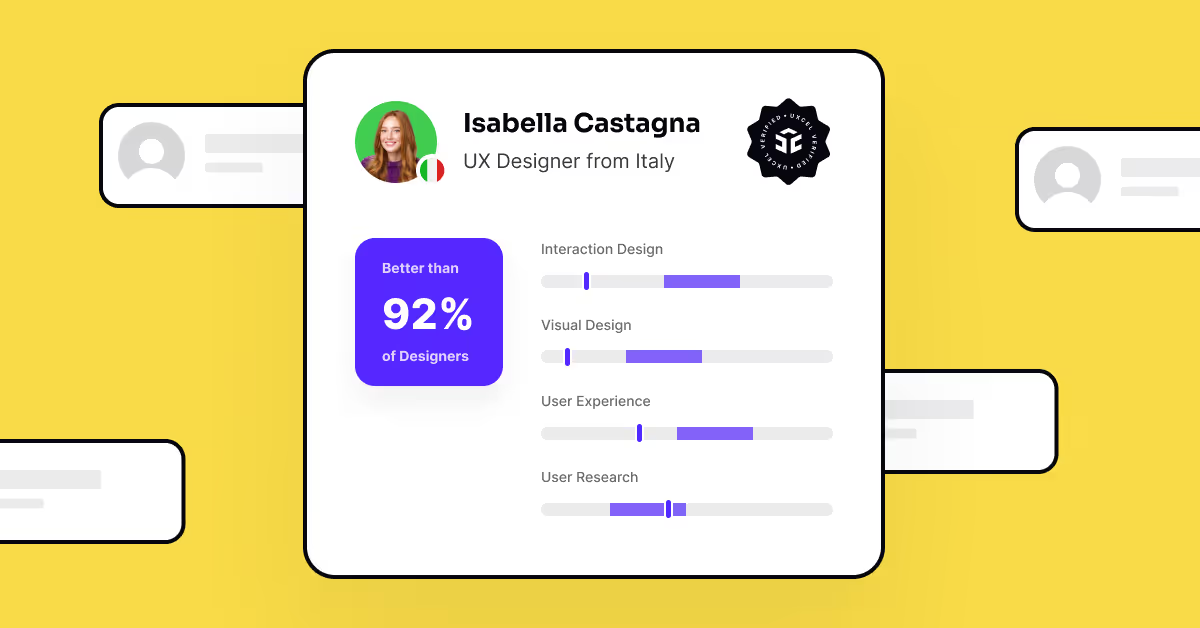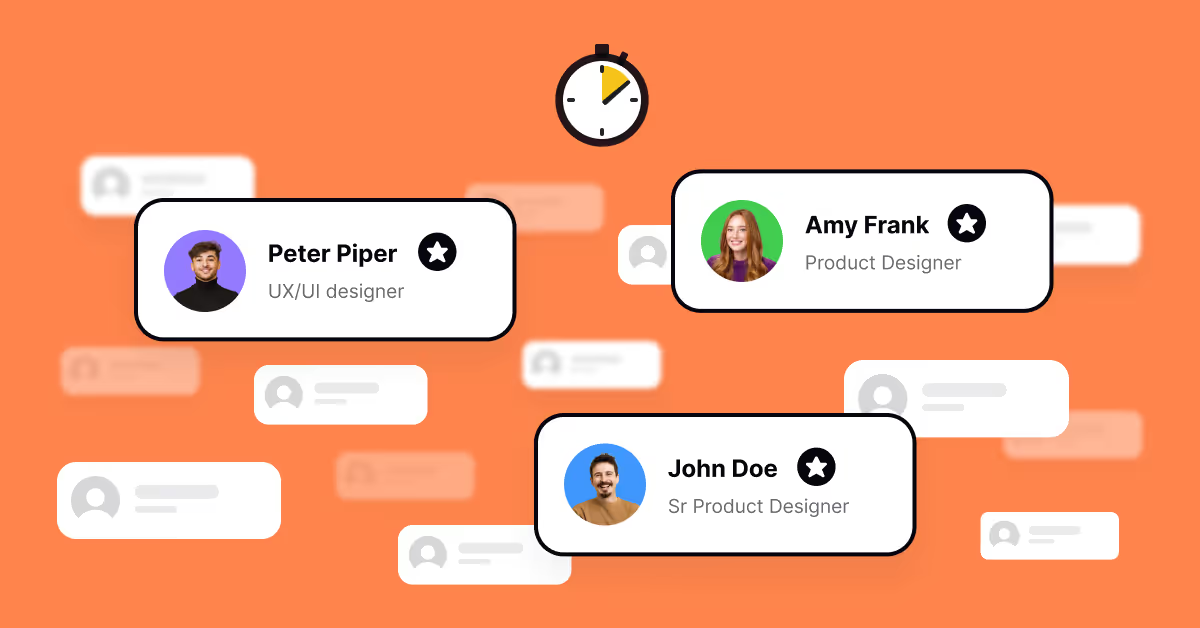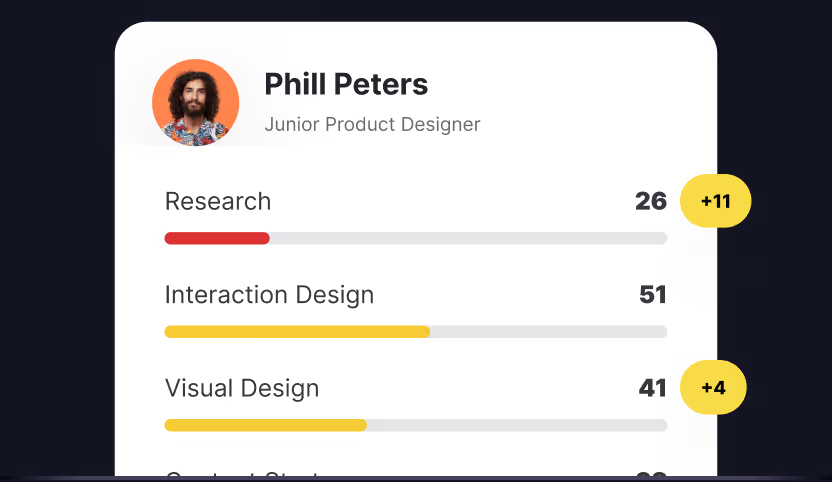
Hiring qualified design talent can be a complicated process — and good results aren’t always guaranteed. You spend hours screening applications (the average corporate job opening gets around 250 applicants), shortlisting candidates, conducting portfolio reviews and interviews, and in the end, you still can’t tell if the people you’re considering hiring are actually qualified for the position.
One of the biggest challenges is that it’s not that difficult to fake design knowledge, especially when talking to people who don’t have much expertise in the area. If you’re not a designer, figuring out how to assess a candidate’s actual skill can seem nearly impossible. And while they may go through interviews with design team leads before hiring, you only want to send the best candidates through to that stage of the hiring process.
Current process of screening designers
The screening process when hiring designers generally looks like this:
- Candidates apply for an opening.
- Candidate applications are screened by non-designers in an HR department.
- Non-designers rely heavily on past experience and a “pretty” portfolio (if they even review a portfolio) to send “qualified” candidates through to the interview stage.
- A number of unqualified candidates actually make it to the interview stage, wasting valuable team time and resources.
- If no one on the team possesses the necessary design qualifications, hires are made based on pretty pictures in a portfolio rather than true design qualifications.
- The result is a high probability of hiring a bad designer, which results in huge money loss, wasting company resources, potentially hurting the company’s brand or products, or worse.
- The entire process starts all over again.
The cost of hiring the wrong professional can be astronomical. While it’s hard to quantify exactly how much it costs, a few organizations have attempted to do so. The U.S. Department of Labor estimates that the cost of a bad hire can reach 30% of that employee’s first year earnings. CareerBuilder estimates it lower, at just under $15,000. On the high end, Undercover Recruiter estimates that a bad hire can cost a company $240,000 or more. Regardless of which estimate is correct, the bottom line is clear: bad hires are expensive.
There has to be a better way. And now there is.

Uxcel offers a better way to hire designers
Non-designers often don’t understand that the process of design isn’t just about making something look good. It’s about creating designs that work for their users. That takes an understanding of design that’s difficult or impossible to assess just by looking at a resumé or portfolio.
To make the best hiring decisions, you need a way to vet designers based on their real design skills. You need a way to quantify whether a designer can understand design problems, come up with possible solutions, test those ideas, and then deliver a product that solves user problems while meeting business goals.
Uxcel saw this gap in the hiring process and created Uxcel Hire. We know how to hire designers without wasting your time and resources. We vet the candidates for you, so you’re only considering those that are the best possible fit for your team. It’s an intensive, design-oriented verification process driven by our adaptive testing tools. Every designer is rigorously tested using data and a panel of experts.
How does the verification process work?
- The designer starts with an automated skill test. This establishes that they have the necessary baseline design knowledge to be effective in the role.
- Afterwards, a Uxcel expert performs a CV or resumé and portfolio review.
- Then, we connect the designer with an expert from our pool to conduct a video interview. These experts are working professionals with at least 7 years of experience.
- After the interview, we generate a Verified Report on the designer, assessing their strengths and weaknesses and the overall summary written by the expert.
The Verified Report makes comparing different applicants easy. You get quantifiable data about the skill test results (including a relative score benchmarked with over 40,000+ of other designers), a score and summary of the portfolio review, a score of the interview, and an overall summary of the candidate.
This system allows you to pre-qualify candidates in an efficient, cost-effective way before you waste a lot of time on interviewing candidates who don’t have the necessary skills for the job. And it helps prevent hiring the wrong candidate for the job, saving you even more money and resources down the road.

The benefits of hiring with Uxcel
One of the biggest issues with the current hiring process is that bias can play a huge role in who gets interviewed and eventually hired. We end up overlooking stellar candidates because of our own biases (whatever they may be). Uxcel removes much of that bias by giving you quantifiable data on which to base your hiring decisions. You won’t have to worry about missing the hidden gems among your candidates just because they don’t fit the qualities you initially think the right hire should have.
Hiring the right designer for your company — whether it’s your first design hire or someone joining an established team — is one of the most important hiring decisions you’ll make. Using Uxcel’s design-first testing tools helps you identify the best UX designers for hire. You’ll save time and money while getting the highest quality feedback about your candidates. Focus your team’s time on screening only the best applicants, rather than pouring over hundreds of resumés and portfolios only to second-guess your decisions.
If you're not looking for a personalised hiring approach, but would like to tap into our pool of 140K+ UX design talent — start by posting a free UX job to our job board.
With Uxcel’s verification process, you’ll know that the designers you’re considering hiring have a solid grasp of the skills you’re looking for. It takes the guesswork out of hiring, giving you actionable data and points of comparison between applicants. In the end, it makes your hiring process more effective, allowing you to find the best possible designers for your company.




